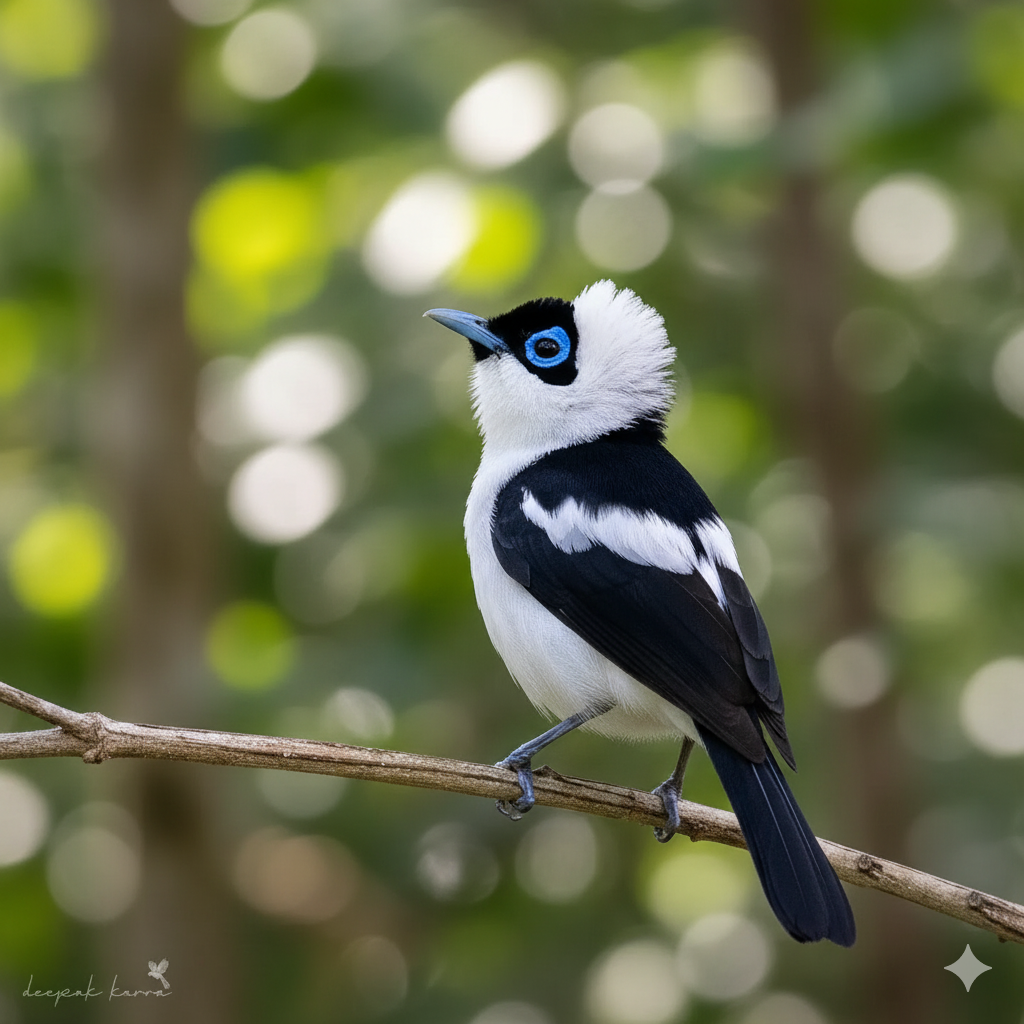Deep in the humid, vine-tangled rainforests of Australia’s Cape York Peninsula, a tiny, energetic bird is putting on a show. It’s a flash of black and white, zipping up and down a tree trunk with a fanned tail and a “frill” of feathers raised like a royal collar.
This is the Frill-necked Monarch (Arses lorealis), a charismatic and captivating bird that is a true gem of the Australian tropics. It’s a bird with a flair for the dramatic, and one you won’t soon forget.
Here’s what makes this tiny forest-dweller so special.
1. The “Frill” is a Fabulous, Flared Collar
The bird’s name is its most defining feature. The Frill-necked Monarch has a remarkable cape of long, white feathers on its nape (the back of its neck). Most of the time, these feathers lie flat, giving the bird a striking white collar.
But when the bird is alarmed, excited, or showing off for a mate, it can erect these feathers at will. The “frill” fans out into a stunning, semi-circular ruff around its head, making the bird look larger and far more impressive. It’s an instant, dramatic transformation that is a true spectacle to behold.
2. A Striking Black-and-White Suit
The Frill-necked Monarch is a masterpiece of monochrome. Its plumage is a clean, sharp pattern of black and white.
-
The Male: He is jet-black on his head, wings, and tail, with a contrasting snow-white “frill,” rump, and underparts. The only thing breaking this pattern is a tiny black spot on his chin.
-
The Female: She is nearly identical to the male, but she lacks the black chin spot, making her chin and throat pure white.
3. That Unmistakable Blue “Eyeliner”
One of the bird’s most beautiful and alien-like features is its eyes. Both the male and female have a broad, fleshy ring of bare skin around each eye that is a brilliant, electric blue. This “eyering” looks like a pair of bright blue goggles and stands in sharp contrast to their dark eyes and black facial feathers.
4. It’s a “Tree-creeper” in Disguise
This bird doesn’t just flit from branch to branch. The Frill-necked Monarch has a unique foraging style. It often behaves like a treecreeper, landing on the lower trunk of a tree and then “spiraling” its way up.
It moves in energetic hops, using its fanned tail for balance as it peers under bark and into crevices, hunting for insects and spiders. It will also perform acrobatic sallies, darting into the air to snatch a bug mid-flight.
5. A Nest That Hangs by a Thread
The Frill-necked Monarch is a master architect. During its breeding season (from November to February), the pair builds a delicate, beautiful nest.
It’s a shallow, flimsy-looking cup made of vines, shredded plant fibers, and spiderwebs, often decorated with lichen for camouflage. But its placement is the true marvel. The nest is almost always suspended by its rim from a “hanging loop” of vine, dangling precariously 6 to 30 feet above the forest floor, well away from the main trunk where predators might climb.
How to Tell It Apart
In the dense rainforest, it’s easy to get confused. The Frill-necked Monarch is often seen in the same habitat as the Pied Monarch (Arses kaupi).
The key difference:
-
Frill-necked Monarch: Has an all-white breast and belly.
-
Pied Monarch: Has a broad black band across its chest, separating its white throat from its white belly.
So, if you’re ever in the remote rainforests of the Cape York Peninsula, keep your eyes peeled. Look for a flash of black and white, a glint of blue, and the tell-tale “frill” of one of Australia’s most charismatic and beautiful birds.
Have you ever been lucky enough to see a Frill-necked Monarch? Or is this tiny dancer now on your bucket list? Share your thoughts in the comments below!

